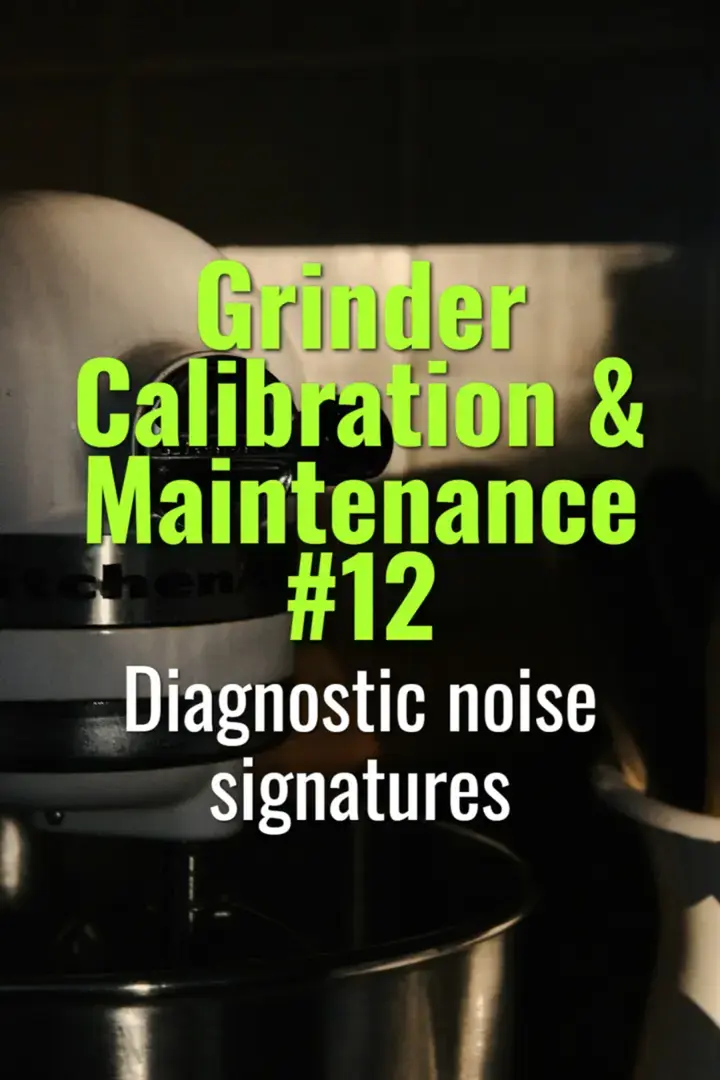Diagnostic noise signatures
How to interpret grinder noise signatures to detect maintenance issues, burr alignment problems, or motor health concerns.
- Coffee Basics Nerds
- 2 min read
Article 12 of 12 in Grinder Calibration & Maintenance/

Why Noise Matters
- A healthy grinder has a consistent hum with steady pitch and volume.
- Changes in sound often signal mechanical wear, misalignment, or foreign objects.
Common Noise Signatures
- Chirping / Metallic Scraping
- Burrs lightly contacting or touching at zero point.
- Can also occur if debris is caught between burrs.
- Solution: Recalibrate zero or clean burr chamber.
- Rattling / Knocking
- Worn or loose bearings.
- Burr carrier misalignment.
- Can cause grind inconsistency.
- High-Pitched Whine
- Motor strain from overloaded grinder or too fine a grind.
- May also indicate worn motor brushes (in older models).
- Low Growl / Struggling Motor
- Voltage instability or failing capacitor.
- Excess resistance from dull burrs or foreign material.
- Intermittent Grinding Noise
- Popcorning (beans bouncing in chamber during single dosing).
- Hopper feeding inconsistently.
- Vibrations / Resonance
- Loose panels, screws, or misaligned burr chamber.
- May affect dosing precision.
Diagnostic Process
- Always run grinder empty and with beans to compare noise profiles.
- Record unusual sounds to share with technicians.
- Combine noise diagnosis with grind quality checks for confirmation.
Preventive Actions
- Tighten screws and panels during regular cleaning.
- Replace bearings or gaskets at first sign of rattling.
- Clean burr chamber to prevent scraping sounds from lodged fragments.
Summary
Noise signatures are an early-warning system for grinder health. Chirps, rattles, whines, and growls each point to different issues. By listening carefully and linking sound with grind performance, baristas and technicians can diagnose problems early and maintain consistent operation.